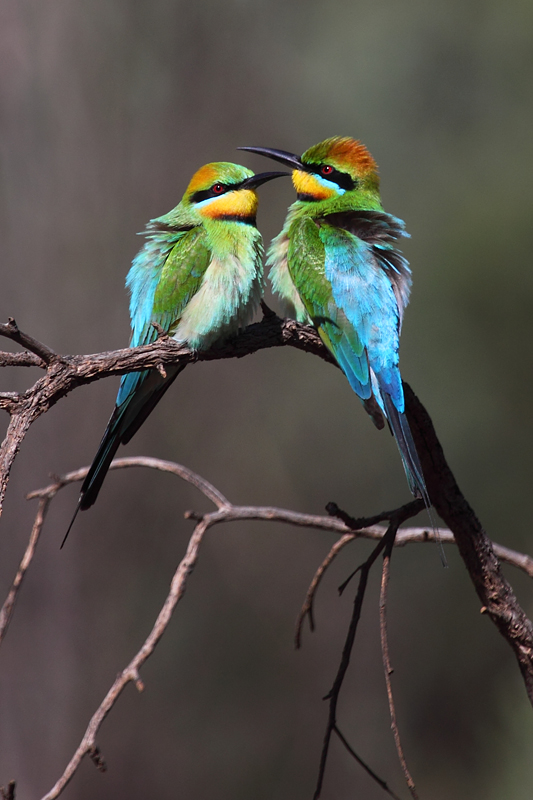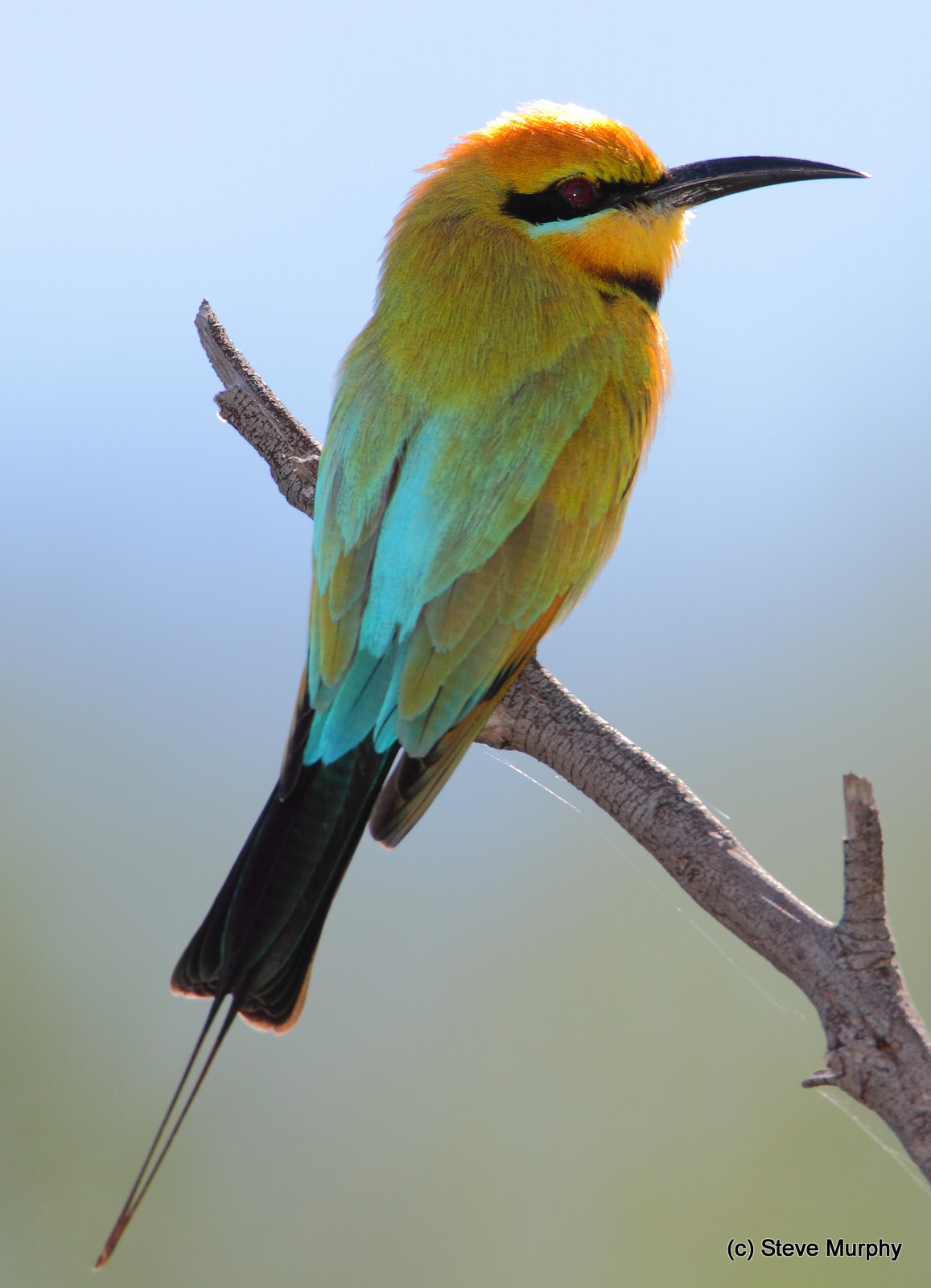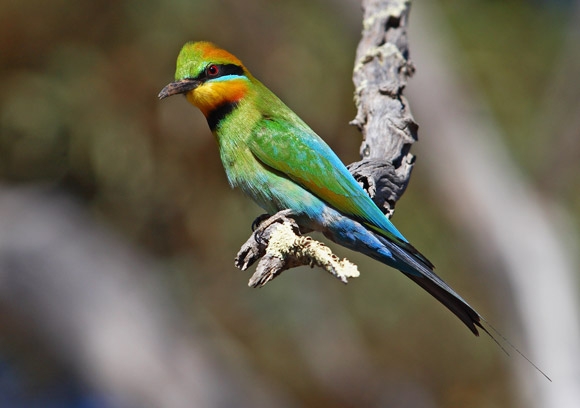
Merops ornatus
TAXONOMY
Merops ornatus Latham, 1801, New South Wales, Australia.
Monotypic.
OTHER COMMON NAMES
English: Rainbow bird; French: Guкpier arc-en-ciel; German:
Regenbogenspint; Spanish: Abejaruco Australiano.
PHYSICAL CHARACTERISTICS
7.5–8 in (19–21 cm), excluding tail streamers, which are 0.8 in
(2 cm) in females and up to 2.8 in (7 cm) in males; 0.7–1.2 oz
(20–33 g). Males are mainly glossy green with azure rump and
uniquely black tail. Crown and nape are bronze; broad, black
eyestripe is bordered below by pale blue band; chin and cheeks
are yellow; throat is rufous; triangular gorget is black. Females
are similar, but hind crown is less bronzy and tail streamers are
shorter and wider.
DISTRIBUTION
Occurs throughout Australia, except most of the central arid
region, and locally in Papua New Guinea. Winters in northern
Australia, New Guinea, as well as the Indonesian islands west
to Lombok and north to Sulawesi.
HABITAT
Open habitats of almost all descriptions, perhaps determined
mostly by availability of nesting sites.
BEHAVIOR
Gregarious outside of the breeding season, roosting and feeding
in flocks, but aggregated only in loose colonies during
breeding.
FEEDING ECOLOGY AND DIET
Primarily bees, wasps, and other hymenopterans. Also takes
beetles, flies, moths, dragonflies, damselflies, and an occasional
spider. Prey is captured on wing after being spotted from a
perch.
REPRODUCTIVE BIOLOGY
Breeding in northern areas is underway by late August or September,
but in southern Australia not until November and December.
Nest burrows are usually dug into flat or gently
sloping ground, with occasional use of low banks. Clutch size
averages five eggs.
Roughly 15% of pairs are helped by one or more male
helpers.
CONSERVATION STATUS
Not threatened. Populations may be increasing as a consequence
of open habitats being created by human activity.
SIGNIFICANCE TO HUMANS
None known.
Other popular Animals
Photo Gallery of - Rainbow bee-eater




 Animalia Life
Animalia Life